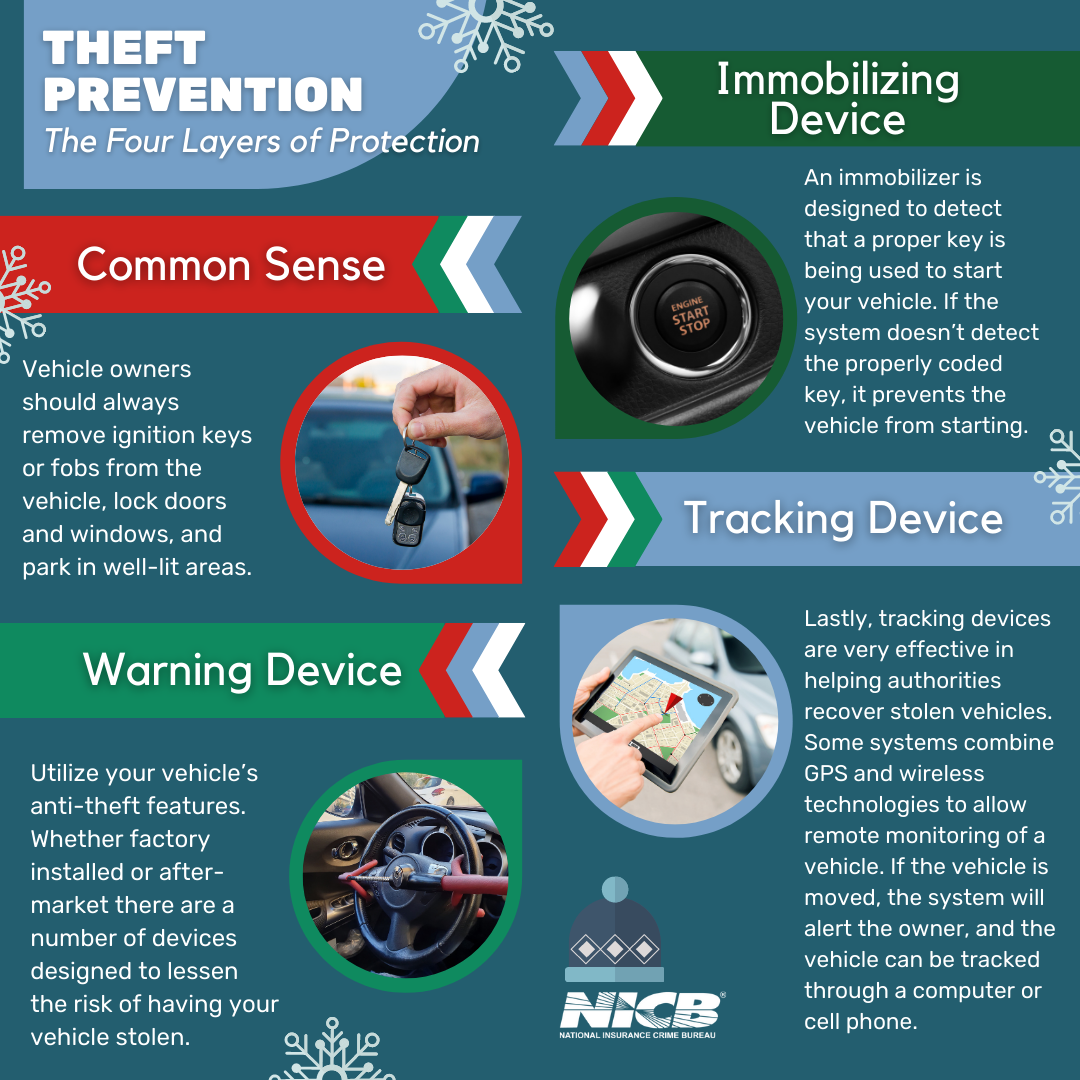Holiday Thefts: Be Thankful Vehicle Thefts Slow Down On Thanksgiving
DES PLAINES, Ill., November 23, 2020 — The National Insurance Crime Bureau (NICB) released its latest Holiday Theft Report which shows dramatic variations throughout the winter months. According to the data, Christmas Day shows the fewest number of vehicles stolen on that day, followed by Thanksgiving. However, New Year’s Eve and New Year’s Day rate as two of the highest theft days.
The data, pulled from the National Crime Information Center stolen vehicle file, shows that in 2019 there were 22,743 vehicles stolen on the 11 holidays studied below, a minimal decrease of 136 compared to 2018. Every day, there were 2,175 vehicles stolen across the nation on average.
The 11 holiday vehicle thefts from highest to lowest are:
| 1. New Year's Day (2,320) | 7. Memorial Day (2,162) |
| 2. Labor Day (2,222) | 8. Christmas Eve (2,011) |
| 3. President's Day (2,204) | 9. Independence Day (1,995) |
| 4. New Year's Eve (2,201) | 10. Thanksgiving (1,683) |
| 5. Halloween (2,191) | 11.Christmas Day (1,580) |
| 6. Valentine's Day (2,174) |
The top five states for holiday vehicle thefts are California, Texas, Florida, Georgia, and Washington. Of these five states, Florida had the most thefts on New Year’s Day, California had the most on Presidents Day, Texas and Washington had the most on New Year’s Eve, and Georgia had the most on Memorial Day. View the full holiday vehicle theft report here.
To reduce the chance your vehicle is stolen, NICB recommends the following four layers of protection:
- Common Sense — remove your keys from the ignition, lock your doors /close your windows, and park in a well-lit area.
- Warning Device — the second layer of protection is a visible or audible device which alerts thieves that your vehicle is protected. These include alarms, steering column collars and locks, brake locks, and theft deterrent decals.
- Immobilizing Device — the third layer of protection is a device which prevents thieves from bypassing your ignition and hot-wiring the vehicle. Some electronic devices have computer chips in ignition keys. Other devices inhibit the flow of electricity or fuel to the engine until a hidden switch or button is activated. Some examples are smart keys, fuse cut-offs, kill switches, starter, ignition, and fuel pump disablers, and wireless ignition authentication.
- Tracking Device — the final layer of protection is a tracking device which emits a signal to police or a monitoring station when the vehicle is stolen. Tracking devices are very effective in helping authorities recover stolen vehicles. Some systems employ “telematics” which combine GPS and wireless technologies to allow remote monitoring of a vehicle. If the vehicle is moved, the system will alert the owner and the vehicle can be tracked via computer.

